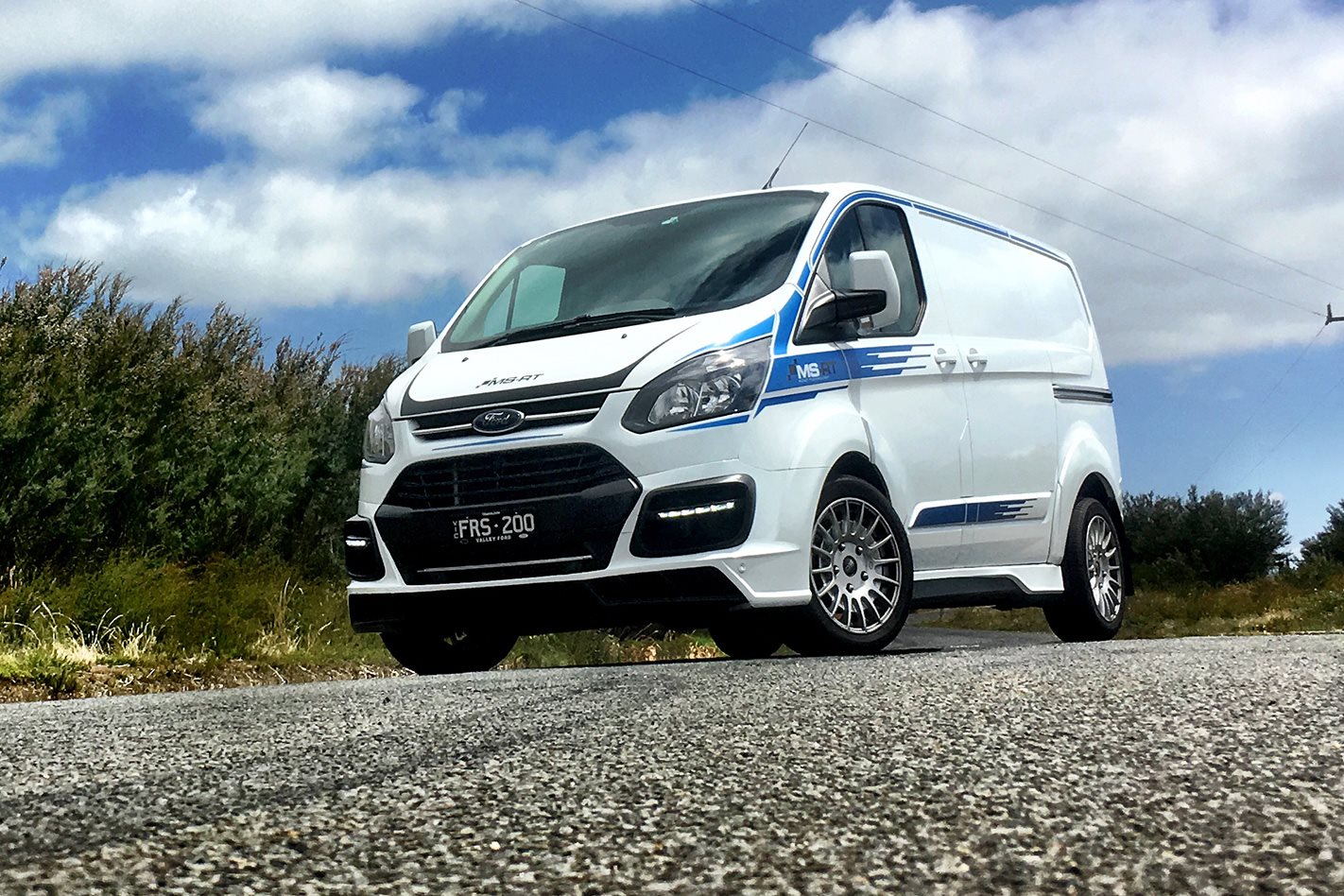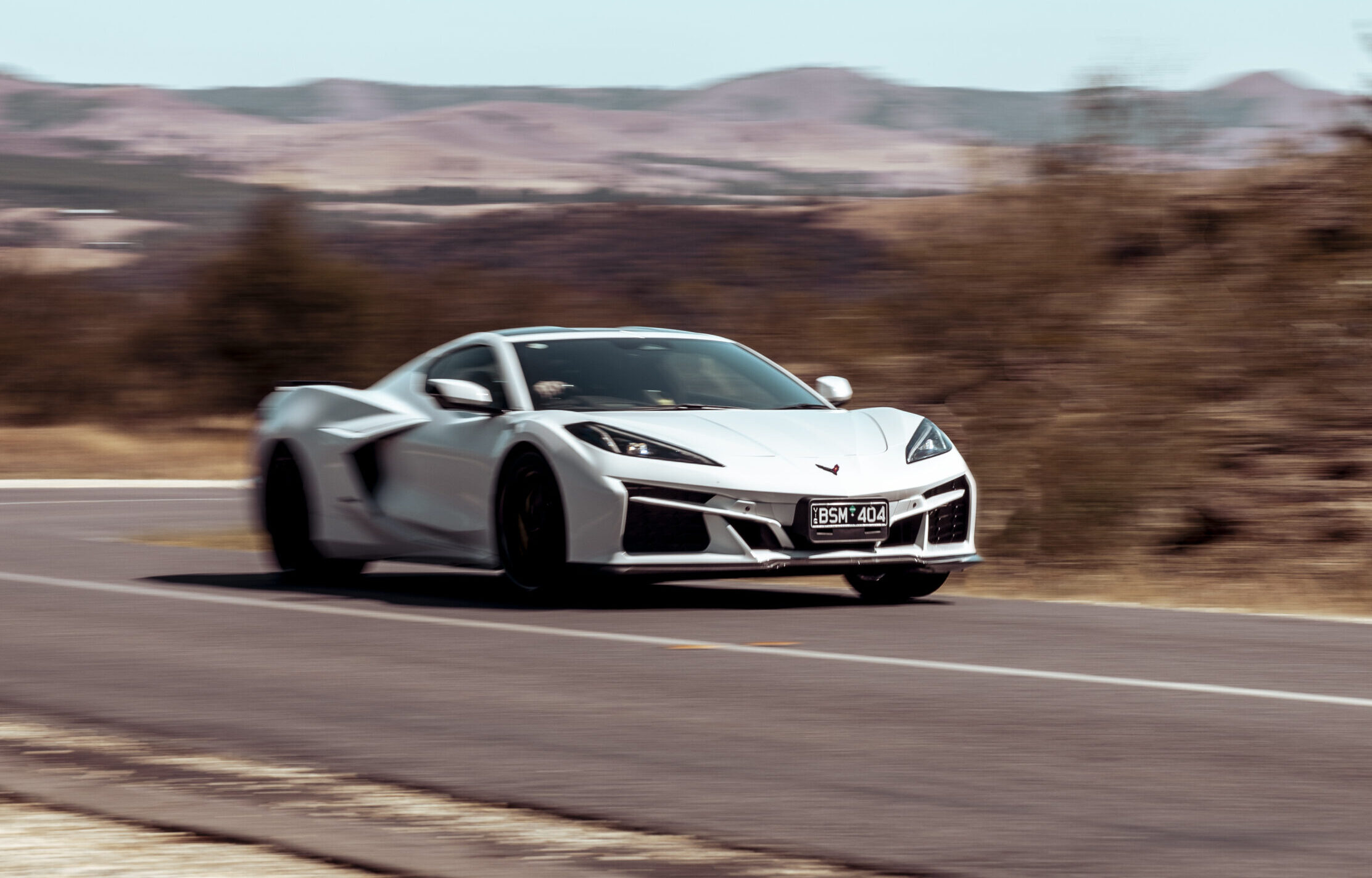
Vans were cool in the 1970s. Decked out with specialist paint jobs, sitting on five-slot alloys and usually fitted with a small-block V8, they transformed from workmanlike load-luggers into desirable, head-turning showpieces. What if there was some way of bringing sexy back to the van brigade? MS-RT Road Technology believes it has the answer.
TELL ME ABOUT THIS CAR
MS-RT Road Technology is a small UK company with ties to the M-Sport rally group. It carves out its niche customising Ford commercial vehicles, including the Ford Ranger and this, the Transit van.
Priced at $61,990 and $63,990 drive away for manual and automatic models respectively, the MS-RT Ford Transit has suspension and drivetrain tweaks that make it much more appealing to drive – and look at – than a conventional cost-conscious version of the van. Surprisingly, even the standard long-wheelbase Transit drives pretty well, so fitting it with stiffer suspension and offset OZ Racing alloys wrapped in low-profile Michelin rubber is a recipe for aiming the big Ford at a twisty road. Which we did.
SO, WHAT’S IT LIKE?
These days, vans are a tool of trade. Built to a budget, with cheap running costs high on the agenda, today’s delivery drivers pilot a fleet remarkable for its mix of flat colours, unpainted bumpers and, well, visual boredom.
That’s where MS-RT Road Technology steps in. For around $19,000 more than your standard, Transit Custom van, Ford’s commercial vehicle becomes … interesting.
But it’s only bits of it that are interesting. Under the bonnet the Transit keeps the same 96kW/385Nm 2.0-litre “EcoBlue” engine as other showroom models. It gets a sticker and body kit that includes a more widely vented bumper with daytime running lights (less grey plastics give the Transit a huge visual lift), a rear valance with twin trapezoidal exhaust ports, flared wheel arches and side skirts. Inside, there’s heated nappa leather seats with contrast blue stitching, M-Sport instrument dials and a flat-bottomed, contrast colour steering wheel.
Our test car also includes Ford’s $1500 City Nav pack that includes a reversing camera linked to the 4.0-inch colour touchscreen mounted high on the dash, front and rear parking sensors, and sat-nav. There’s digital radio, too, although the default audio system can’t carry the format’s crystal-clear clarity to make it sound any different to the analogue FM equivalent.
But the bits we’re interested in – all of which are underneath the boxy body – transform the Transit. They include a twin sports exhaust replacing the single one, 18-inch OZ Racing alloy wheels (replacing the range-wide 16-inch steels) wrapped in 245/45 profile Michelin Primacy 3ST rubber, and a set of springs for the Macpherson front suspension struts (the rear uses load-bearing leaf springs) from motorsport and high-end customisation specialists Eibach.
So the MS-RT Ford Transit Custom may not have any more fire in its belly, but what it lacks in straight-line firepower it makes up for in the twisty sections of road. Surprisingly for a commercial vehicle, the default Transit was already a remarkably competent handler. The Eibachs combined with the offset OZ Racing alloys wrapped in sticky Michelins only improve on this. Chuck it in, and the front-driving Transit hangs on like a limpet with surprisingly little body roll. It’s really only the stiff-legged suspension that detracts from the experience, causing the Transit, set up for load lugging, to pogo-stick bounce off bigger, sharper bumps.
The fairly new to the Ford family 2.0-litre four-cylinder diesel engine, despite its dual exhausts, is the party pooper. It runs out of puff alarmingly quickly. It has a stop-start system to save fuel in traffic, and will automatically rev when in first gear to minimise the risk of a stall. Paired to the short-shift, console-mounted shifter for the six-speed manual gearbox, it’s a fun combination – a real plus considering how often you need to change gears to hit the engine’s sweet spot.
It’s an odd feeling punting a big, long van at speed and trusting in the front end to bite and turn when asked. The Transit still uses hydraulic steering, so it remains more feelsome and communicative than our memory of even the swansong Ford Falcon FGX’s electrically assisted one.
The MS-RT sort of works on a certain level, but at the end of a day it’s still just a vanilla-scented van beneath a more spicy skin.
VERDICT
The idea of taking a workmanlike vehicle and giving it some spice is nothing new; a similar concept has put the bread on HSV’s table for the last 30 years. The MS-RT Ford Transit is certainly more spicy, but it lacks the under-bonnet poke to tap the dynamic potential all the other modifications provide.
ANY OTHER CARS I SHOULD CONSIDER?
None, really, when it comes to sports-honed boxes in wheels. But ordinarily you’d cross-shop for long-wheelbase options including a Mercedes-Benz Vito, a Volkswagen Transporter or a Renault Trafic.



